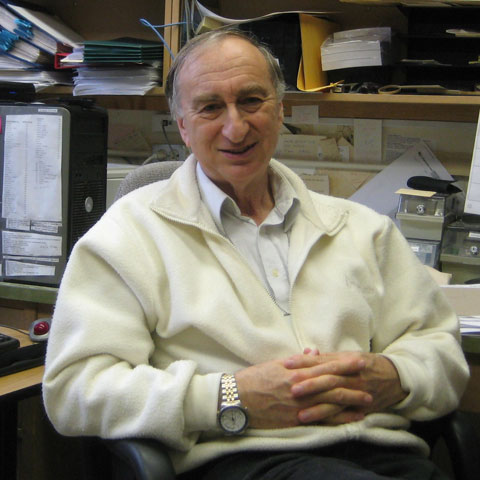Cannabis expert believes that the industry’s future lies outside of Canada

Canada might be cashing in on the legal cannabis industry for now, but what’s in store for the future?
According to a Canadian cannabis expert, the future lies in Central and South America’s sun-drenched fields, as opposed to the fully-equipped, state-of-the-art greenhouses that have progressively speckled the Great White North’s landscape since legalization was enacted on October 17.
Ernie Small, a principal research scientist at Ottawa-based Agriculture and Agri-Food Canada, has been studying and growing cannabis for decades. He has written numerous books about cannabis cultivation. In his opinion, today’s low-efficiency machines and equipment are driving up the price of cannabis.
“There is a lot to learn, and their methodology is inefficient and is contributing to the high cost of [cannabis],” says Small, who has had the privilege of touring numerous grow facilities. “There is no question that this is an industry with huge profit potential, but it also has bankruptcy potential.”
Cannabis cultivation in Central and South America cheaper than Canada
The cost of cannabis cultivation is significantly less in Central and South America than it is in Canada, according to Small. Cannabis oil production is ramping up in South America, where companies like Aurora Cannabis have seen the potential and secured an early investment.
The Canadian cannabis company has already invested in 10 different companies throughout South America.
What’s more, Aphria Inc. signed a $300 million deal with a Latin American company late last year. Since the medical cannabis industry alone is estimated to generate upwards of $8.5 billion by 2028, there’s no wonder why investor attention is shifting in the direction of South America.
Cannabis expert grew hundreds of plants in Ottawa
Small got involved in the cannabis industry back in the early 1970s when the federal government ordered global police departments to distribute him with 350 seeds via mail.
The purpose? To determine whether or not the cannabis they confiscated from smokers was sourced from THC-laden psychoactive plants or from hemp plants, which grows with less than 0.3 percent THC (tetrahydrocannabinol).
In 2017, Small was awarded the Order of Canada for his involvement with public policy and botanical knowledge. The award is acknowledged as the second highest honor for merit in the system of orders, decorations, and medals of Canada.
“It grew fantastically well,” says the scientist, who is now aged 78 years. “We had plants that were 18 feet high.”
When word got out about Small’s cannabis grow-op, it was transferred to a secure greenhouse until the 1980s.
Cannabis expert’s botanical classification system was adopted worldwide
By 1976, Small had procured enough data to write and publish a policy that is still widely used around the world today – a botanical classification system that distinguishes legal hemp from illicit cannabis using a percentage benchmark set at 0.3 percent THC.
“It turned out to be the most significant contribution I have ever made,” Small said with pride.
In spite of his many years of cannabis cultivation experience, the passing of Canada’s “Cannabis Act” (Bill C-45) took Small by surprise.
“I never thought [cannabis] would ever become legalized — period,” he says. “It’s a surprise that the counterculture movement has been able to consolidate and become the majority of society.”
Nonetheless, he still supports cannabis reform and he even assisted in helping to draft the new federal law.
“In this case, I entirely support it because it just makes perfect sense,” he says. “The war on drugs has been substantially a failure, and how many people can you put in jail?”
Despite the fact that recreational cannabis is legal, you won’t catch Small smoking a joint. This doesn’t mean that he still doesn’t want to be surrounded by the plants, however. Small says that he plans to grow the maximum allowed amount of four cannabis plants inside his greenhouse.
“It will just make me feel comfortable to have the plants around,” he concludes.








